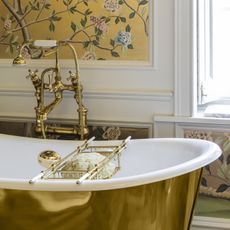Estates in Scotland
Estates north of the border are in great demand
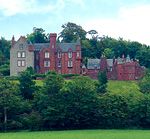

According to Savills' latest UK residential research, the recent succession of interest-rate rises has led to the emergence of a new North-South divide in the UK property market. 'In the first half of the year, house prices in the north of England grew by no more than 2%, compared with growth rates of 7.7% in London and more than 4.5% in the South-East and the South-West,' says research director Yolande Barnes. 'The one clear exception to the North-South divide is Scotland, where house prices have continued to grow regardless of interest-rate rises.' Not least in the country-house market, it seems, judging by the 'offers over £3.5 million' sought by Knight Frank (0131?225 8171) and Savills (0131?247 3700) for historic Fordell Castle, near Dunfermline, Fife, which is for sale for the third time in a decade. The Z-plan tower house, which stands on a steep promontory overlooking the Keithing Burn, was built in 1567 on lands given to the Henderson family by James IV. The three-storey castle, comprising a rectangular main block, with square stair-towers at opposite corners, was later destroyed by fire, but rebuilt in about 1581; it was damaged again by Cromwell's army in 1651. By the 19th century, the Henderson family had built themselves a grand new mansion nearby, and in 1866, the estate passed by marriage to Hew Duncan, second son of the Earl of Camperdown. A century later, Fordell was a total ruin, when the flamboyant Scottish MP, Sir Nicholas Fairbairn QC, bought it for £100 and restored it as his family home. He died in 1995, and Fordell Castle was sold in 1997, for about £500,000, to a local veterinary surgeon, before being sold on again to businessman Andrew Berry, for a reputed £1m. During his tenure, Mr Berry has spared no expense in restoring the A-listed, seven-bedroom castle to its traditional splendour, buying in extra land to create a very private, 250-acre estate. With a current ratio of eight buyers for every seller, demand for Scottish estates is the highest since the last boom in 1989?90, says Andrew Rettie of Strutt & Parker. Already this year, he has sold three Scottish estates privately to City buyers, who are increasingly prepared to make pre-emptive bids at well above the guide price, to ensure that estates never reach the open market. In the case of the Leny estate at Callender, Perthshire, Strutt & Parker (0131?226 2500) have set a closing date of next Friday, August 24, for receipt of 'best and final offers' over £2.495m. The grandeur and setting of Leny House built in 1513, extended in 1845, remodelled in 1845, and completely restored by the present owners in 1999?2004 reflect its historic role as a seat of the Buchanan family. Today, it is the heart of a thriving, 22-acre leisure estate supported by the letting income from part of the main house, six holiday lodges and two Victorian cottages, with planning consent to create a further 10 holiday units. Strutt & Parker are also selling two historic houses in Ayrshire with close links to the Montgomerie family, the senior branch of which were Earls of Eglinton. Offers over £2.5m are sought for Skelmorlie Castle, listed Category B, which stands high above the coastal village of Skelmorlie, with spectacular views across the Firth of Clyde towards Bute and Argyll. The castle was built in 1502, by George Montgomerie, second son of the first Lord Montgomerie, who chose the site with care. The L-shaped chapel building was added in 1636 and the Victorian wing in 1856. The castle was rebuilt by the present owners following a serious fire in 1959, and subdivided into six self-contained houses and apartments, occupied by various family members. It stands in 28 acres of grounds half native woodland underplanted with dense banks of rhododendron, half formal gardens and soft-fruit gardens. Following the loss of the two great Eglinton estate houses, Montgomerie House and Eglinton Castle, Annick Lodge at Irvine, 18 miles from Ayr, takes on the mantle of Ayrshire's most elegant mansion. Offers over £1.395m are sought for the gracious late-18th-century lodge built in the style of an English ferme ornée, and set in 64 acres of parkland on the banks of Annick Water. There has been a house on the site since the 15th century, although the present house was largely created by Alexander Montgomerie, a nephew of the 12th Earl of Eglinton, who bought Ouer Peirstone, as it was then called, in 1790. The grand Georgian façade and fine principal rooms may have been the work of the architect John Paterson, who was working on the other Eglinton estate houses at about the same time. The 18th-century addition was linked by graceful curved screen walls to pavilions to the north-west and south-east. Yet gracious Annick Lodge was anything but elegant when the current vendor's family bought the house in 1935. It has been the work of several lifetimes to restore it to its present state. The most recent renovations included gutting and reroofing the north-west pavilion; reslating and releading the roof of the main Georgian block; repairing or rebuilding the chimneys, and re-asphalting the winter-garden roof. Inside, this lovely house has retained almost all its original Georgian plasterwork, cornicing, fireplaces, doors and door furniture. Annick Lodge, listed Category A, has accommodation on three floors, including four reception rooms, a billiard room, a garden room, extensive domestic offices, eight bedrooms and four bathrooms. A substantial stable block and a range of traditional outbuildings complete the picture of what a model small country estate should be in the 21st century.
Sign up for the Country Life Newsletter
Exquisite houses, the beauty of Nature, and how to get the most from your life, straight to your inbox.
Bringing the quintessential English rural idle to life via interiors, food and drink, property and more Country Life’s travel content offers a window into the stunning scenery, imposing stately homes and quaint villages which make the UK’s countryside some of the most visited in the world.
-
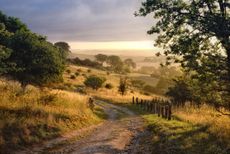 What to expect when you're expecting (to move to the countryside)
What to expect when you're expecting (to move to the countryside)On March 28, agents Michael Graham will be showcasing some of their best countryside properties at their west London office.
By James Fisher Published
-
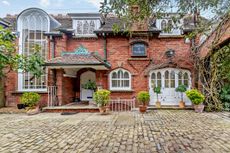 Property Talk: When is the right time to downsize?
Property Talk: When is the right time to downsize?Sometimes our homes can get too big for us, meaning it’s time to downsize. Here, we speak to those involved with the process.
By James Fisher Published
-
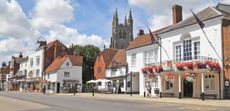 How to win in the property market: Tips from some of Britain's best buying agents
How to win in the property market: Tips from some of Britain's best buying agentsWhether looking for the perfect family home or negotiating on price, buying agents do the heavy lifting–and are well used to analysing the market. Carla Passino gets advice from a few of the best.
By Carla Passino Published
-
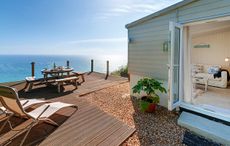 Top tips on renting your holiday home
Top tips on renting your holiday homeThe holiday-home market on the Cornish coast looks set for a lively summer. Arabella Youens finds out how to make the running costs bearable.
By Arabella Youens Published
-
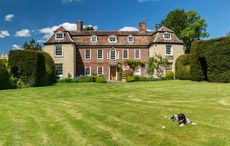 Tips and advice for holiday home owners
Tips and advice for holiday home ownersWith the start of the summer season nearly upon us, more and more country-house owners are dipping into the short-let scene.
By Country Life Published
-
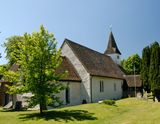 Property guide to Elstead
Property guide to ElsteadFreddie Mack shares the secrets of Elstead in Surrey, a prime spot for young families looking for properties outside London near good schools
By Country Life Published
-
 Property guide to Cheriton
Property guide to CheritonIf you're considering buying property in or around Cheriton this year, take a look at our property guide which covers where to buy, what prices to expect and where to have fun in the area
By Country Life Published
-
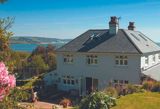 Make your holiday let work for you
Make your holiday let work for youIf you're considering renting out your holiday property prepare by reading this first
By Country Life Published


